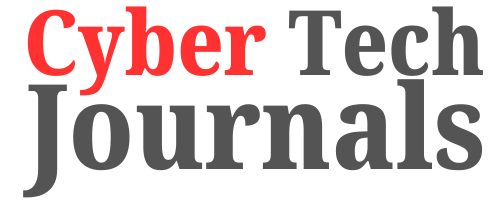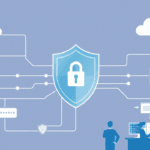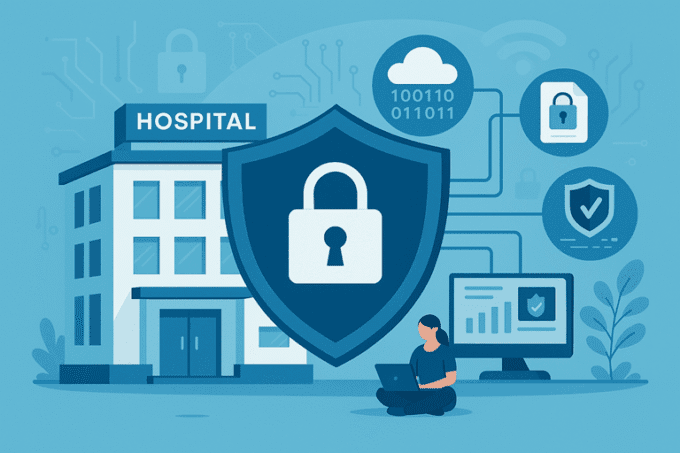In the ever-evolving digital landscape of 2025, cybersecurity is no longer just a luxury; it’s a fundamental necessity for every organization and IT professional. Cyber threats are growing in sophistication and frequency, making the defense of digital assets more critical than ever. While many robust cybersecurity solutions come with a hefty price tag, a wealth of powerful, free cybersecurity tools exists that can significantly enhance your security posture without breaking the bank. These tools are invaluable for IT professionals looking to secure their networks, endpoints, data, and identities, whether for personal use, small businesses, or as part of a larger enterprise strategy.
This comprehensive guide will explore the best free cybersecurity tools available in 2025, detailing their functionalities and how IT professionals can leverage them to build a resilient defense against the latest cyber threats. From network monitoring and vulnerability scanning to password management and secure browsing, we’ll cover essential categories that empower you to strengthen your security defenses effectively and efficiently.
Table of Contents
Key Summary
- Essential Defense: Free cybersecurity tools are powerful resources for IT professionals in 2025, offering robust protection against a wide range of cyber threats without incurring costs.
- Diverse Categories: These tools span critical areas like network security, endpoint protection, identity management, and data privacy, providing a comprehensive security toolkit.
- Open-Source Advantage: Many free tools are open-source, offering transparency, community support, and the flexibility for customization, making them highly valuable for IT pros.
- Layered Security: Combining several free tools creates a strong, layered defense. No single tool is a silver bullet, so a multi-faceted approach is key to effective cybersecurity.
- Continuous Improvement: Regular updates, understanding tool limitations, and implementing best practices are crucial to maximizing the effectiveness of any free cybersecurity solution.
The Evolving Threat Landscape in 2025: Why Free Cybersecurity Tools are More Crucial Than Ever
As we navigate through 2025, the cybersecurity landscape continues to present complex challenges. Ransomware attacks are becoming more targeted, phishing schemes are increasingly sophisticated, and nation-state-sponsored threats pose significant risks. The rise of AI-powered attack tools means defenders must also innovate constantly. For IT professionals, staying ahead of these threats requires a proactive approach and access to effective security solutions.
Many organizations, especially small and medium-sized businesses (SMBs), operate with limited budgets. This is where free cybersecurity tools become indispensable. They offer a cost-effective way to implement foundational security measures, perform critical tasks like vulnerability assessments, and even support incident response efforts. Embracing these tools allows IT teams to allocate resources to other critical areas while maintaining a strong security baseline.
“In 2025, relying solely on reactive measures is a losing battle. Free cybersecurity tools empower IT professionals to be proactive, providing essential visibility and control over their digital environments.”
Network Security Essentials: Protecting Your Digital Perimeter
Securing the network is the first line of defense. IT professionals need tools that can monitor traffic, identify vulnerabilities, and prevent unauthorized access. Many excellent home network security free tools are also powerful enough for professional environments.
Firewalls: Your Network’s Gatekeepers
A firewall acts as a barrier between your internal network and external threats. While hardware firewalls are common, software firewalls offer robust protection, especially for individual servers or specific network segments.
pfSense / OPNsense: These are open-source firewall distributions based on FreeBSD. They turn a standard computer into a powerful, feature-rich router and firewall.
- Benefits for IT Pros: Offer advanced routing, VPN capabilities (IPsec, OpenVPN), intrusion detection/prevention (with Snort/Suricata integration), traffic shaping, and robust logging. They are highly customizable and scalable.
- Use Case: Ideal for small to medium-sized businesses, home labs, or as a strong perimeter defense for specific network segments.
- Why it’s great: These are truly enterprise-grade features available for free, making them top-tier open source cybersecurity tools.
Network Scanners and Analyzers: Understanding Your Network
Visibility into network activity and potential weaknesses is paramount. These tools help IT professionals map their network, identify active devices, and analyze traffic patterns.
Nmap (Network Mapper): A classic and indispensable open source cybersecurity tool for network discovery and security auditing.
- Benefits for IT Pros: Can discover hosts and services on a computer network, creating a “map” of the network. It identifies open ports, operating systems, and service versions running on devices.
- Use Case: Penetration testing, vulnerability scanning (identifying outdated services), network inventory, and general network reconnaissance.
- Fun Fact: Nmap is so iconic it has appeared in numerous movies and TV shows!
Wireshark: The world’s foremost network protocol analyzer. It lets you see what’s happening on your network at a microscopic level.
- Benefits for IT Pros: Captures and interactively browses network traffic. It can analyze hundreds of protocols and provides deep insights into network communications, helping to diagnose issues, detect suspicious activity, and understand traffic flows.
- Use Case: Troubleshooting network problems, analyzing malware behavior, detecting unauthorized network activity, and understanding protocol implementations.
- Internal Link: To understand how increased connectivity impacts security and why tools like Wireshark are vital, explore how cybersecurity is dealing with increased connectivity.
Intrusion Detection/Prevention Systems (IDS/IPS): Alerting and Blocking Threats
These systems monitor network traffic for malicious activity and policy violations. IDS simply alerts, while IPS can actively block threats.
Snort: A widely deployed open source cybersecurity tool that functions as both an IDS and IPS.
- Benefits for IT Pros: Uses a rule-based language to detect various attacks, including buffer overflows, stealth port scans, CGI attacks, and more. It offers real-time traffic analysis and packet logging.
- Use Case: Monitoring network segments for malicious activity, alerting on suspicious patterns, and preventing known attack signatures.
Suricata: Another powerful, high-performance open source cybersecurity tool IDS/IPS/NSM (Network Security Monitoring) engine.
- Benefits for IT Pros: Known for its multi-threading capabilities, making it highly efficient on modern hardware. It can inspect traffic using rule sets like Snort’s, offering advanced threat detection.
- Use Case: Similar to Snort but often preferred for larger networks due to its performance capabilities.
Free VPNs: Secure Your Connections (Download Free VPN Secure)
While enterprise-grade VPNs are usually paid, free versions can provide basic secure connectivity for individual users or specific tasks. However, it’s crucial to choose reputable providers.
ProtonVPN Free / TunnelBear Free: These services offer a limited free tier that provides basic VPN functionality.
- Benefits for IT Pros: Encrypts your internet connection, protecting your data from eavesdropping, especially on public Wi-Fi. Helps bypass geo-restrictions and maintains a degree of anonymity.
- Limitations: Free versions often have data caps, speed limitations, or fewer server locations. They are not suitable for high-bandwidth professional use but can be useful for secure browsing or testing.
- Recommendation: For truly secure and reliable professional use, a paid VPN or an internally managed VPN (like OpenVPN on pfSense) is always recommended. For basic “download free VPN secure” needs, these can be a start.
DNS Filtering: Blocking Malicious Domains
DNS filtering can prevent users from accessing known malicious websites, even before a connection is fully established.
Cloudflare DNS (1.1.1.1) / OpenDNS Home: These services offer free DNS resolvers that also block access to known malware, phishing, and adult content sites.
- Benefits for IT Pros: Simple to implement at the router level for home network security free or on individual workstations. Adds an extra layer of protection by preventing connections to dangerous sites.
- Use Case: Enhancing general browsing security, protecting home networks, or as a quick win for small office environments.
Endpoint Protection & Vulnerability Management
Endpoints (computers, servers, mobile devices) are frequent targets. Protecting them requires a combination of anti-malware, vulnerability assessment, and host-based security.
Antivirus/Anti-Malware: Your First Line of Defense
Even in 2025, traditional antivirus remains a foundational layer of protection against known threats.
Sophos Home Free: Offers enterprise-grade security features for up to 3 devices.
- Benefits for IT Pros: Provides real-time antivirus, anti-malware, web protection, and parental controls. Uses the same core technology as Sophos’s business products.
- Use Case: Securing personal devices, home office computers, or evaluating Sophos technology before a business purchase.
Avast Free Antivirus / AVG AntiVirus Free: Popular free antivirus solutions with good detection rates.
- Benefits for IT Pros: Real-time protection against viruses, malware, and ransomware. Includes features like Wi-Fi Inspector and email shield.
- Considerations: Free versions often come with ads or prompts to upgrade. Review privacy policies carefully, as some free AVs have historically collected user data.
Malwarebytes Free: Excellent for on-demand scanning and removing existing malware.
- Benefits for IT Pros: Specializes in detecting and removing stubborn malware that traditional antivirus might miss. The free version is a powerful scanner and cleaner.
- Use Case: Post-infection cleanup, or as a secondary scanner alongside a primary antivirus for enhanced protection.
- Internal Link: To learn more about the threats these tools combat, read about what is malware and how can you protect.
Host-Based Intrusion Detection Systems (HIDS): Monitoring Individual Systems
While network IDS watches the perimeter, HIDS monitors individual systems for suspicious activity.
OSSEC: A powerful open source cybersecurity tool HIDS that performs log analysis, integrity checking, rootkit detection, time-based alerting, and active response.
- Benefits for IT Pros: Monitors system logs, file integrity, and rootkit activity on servers and workstations. Can detect unauthorized changes and alert administrators.
- Use Case: Securing critical servers, monitoring compliance, and enhancing the security of Linux-based systems.
Vulnerability Scanners: Finding Weaknesses Before Attackers Do
Identifying vulnerabilities is a critical proactive step in cybersecurity.
OpenVAS (Open Vulnerability Assessment System): A comprehensive open source cybersecurity tool vulnerability scanner.
- Benefits for IT Pros: Performs extensive network and system vulnerability scans, identifying security holes in operating systems, applications, and network devices. Provides detailed reports and recommendations.
- Use Case: Regular security audits, compliance checks, and identifying configuration weaknesses.
Nessus Essentials (Free Tier): A limited free version of the industry-leading Nessus vulnerability scanner.
- Benefits for IT Pros: Allows scanning of up to 16 IP addresses per scanner. Provides accurate vulnerability detection and configuration auditing.
- Use Case: Small-scale vulnerability assessments, testing specific systems, or learning the Nessus platform.
- Internal Link: Understanding why vulnerabilities exist is key. Learn about why software complexity leads to vulnerability.
Identity & Access Management: Securing User Accounts
Stolen credentials are a primary vector for cyberattacks. Robust identity and access management (IAM) tools are vital.
Password Managers: The Key to Strong Passwords (Password Manager Free Version)
Reusable and weak passwords are a major security risk. Password managers generate, store, and auto-fill strong, unique passwords for all your accounts.
Bitwarden Free: An excellent open source cybersecurity tool password manager that offers robust features for individuals and teams.
- Benefits for IT Pros: Securely stores unlimited passwords, notes, credit cards, and identities. Offers strong encryption, cross-platform sync, and two-factor authentication (2FA) support. The free version is highly functional.
- Use Case: Personal use, small teams, and managing credentials for various systems securely. It’s a top choice for a “password manager free version.
KeePassXC: A free and open source cybersecurity tool password manager that stores passwords locally in an encrypted database.
- LastPass Free: Another popular password manager with a free tier.
- Benefits for IT Pros: Offers basic password management, but the free version has limitations on device type (e.g., desktop or mobile, not both simultaneously).
- Considerations: While a good “password manager free version,” Bitwarden often provides more features in its free tier.
- Internal Link: Protecting credentials is vital for preventing business email compromise. Read the ultimate guide to protect your business from email compromise in 2025.
Multi-Factor Authentication (MFA) Apps: Beyond Just Passwords
MFA adds an extra layer of security, requiring a second verification step beyond just a password.
Google Authenticator / Authy: Free apps that generate time-based one-time passwords (TOTP) for MFA.
- Benefits for IT Pros: Integrates with countless online services and enterprise systems that support TOTP. Significantly reduces the risk of account compromise, even if a password is stolen.
- Use Case: Securing personal and professional accounts, adding an essential layer of protection to all critical logins.
Data Security & Privacy: Protecting Your Information
Ensuring the confidentiality and integrity of data is paramount. These tools help encrypt data and securely erase sensitive information.
Encryption Tools: Safeguarding Your Data
Encryption makes data unreadable to unauthorized individuals.
VeraCrypt: A free and open source cybersecurity tool for on-the-fly encryption.
- Benefits for IT Pros: Can create encrypted virtual disks within a file or partition, or encrypt an entire partition or storage device. Offers strong encryption algorithms and plausible deniability features.
- Use Case: Securing sensitive files on laptops, external hard drives, or USB sticks, protecting data at rest.
GnuPG (GNU Privacy Guard): A free implementation of OpenPGP, used for encrypting and signing data and communications.
- Benefits for IT Pros: Enables secure email communication, file encryption, and digital signatures. Essential for verifying the authenticity of software downloads and communications.
- Use Case: Securely exchanging sensitive documents, verifying software integrity, and protecting email privacy.
Secure File Deletion: Ensuring Data is Gone for Good
Simply deleting files doesn’t remove them permanently. Secure deletion tools overwrite data multiple times.
Eraser: A free and open source cybersecurity tool for securely deleting files and folders.
- Benefits for IT Pros: Overwrites data multiple times using patterns like Gutmann or US DoD 5220.22-M standards, making recovery virtually impossible.
- Use Case: Disposing of sensitive documents, preparing old hard drives for recycling, or ensuring compliance with data retention policies.
Secure Browsers & Extensions: Private Web Access
Your web browser is a major attack surface. Choosing privacy-focused browsers and extensions enhances security.
Brave Browser: A free web browser that automatically blocks ads and trackers.
- Benefits for IT Pros: Built-in ad and tracker blocking improves privacy and speeds up browsing. Offers a secure, private browsing experience by default.
- Use Case: Everyday browsing, research, and for users who prioritize privacy and performance.
Firefox with Privacy Extensions: Firefox, combined with extensions like uBlock Origin (ad blocker), Privacy Badger (tracker blocker), and HTTPS Everywhere (forces HTTPS), creates a highly secure browsing environment.
- Benefits for IT Pros: Offers extensive customization and a strong commitment to user privacy. The combination of extensions provides robust protection against online tracking and malicious content.
- Use Case: Customizable secure browsing for various professional tasks.
Security Auditing & Forensics: Investigating and Learning from Incidents
When incidents occur, IT professionals need tools to investigate, analyze, and learn from them.
Open-Source SIEM (Security Information and Event Management): Centralized Logging
SIEM systems collect and analyze security logs from various sources, helping to detect and respond to threats. While enterprise SIEMs are expensive, open-source alternatives exist.
ELK Stack (Elasticsearch, Logstash, Kibana): A powerful open source cybersecurity tool suite for log management and analysis.
- Benefits for IT Pros: Logstash collects logs, Elasticsearch stores and indexes them, and Kibana provides powerful visualization dashboards. Can be used to build a robust, free SIEM.
- Use Case: Centralized logging for servers and network devices, real-time threat detection, incident analysis, and compliance reporting.
Graylog: Another popular open source cybersecurity tool for log management and analysis, offering a more out-of-the-box SIEM experience than ELK.
Forensic Tools: Digital Crime Scene Investigation
When a breach occurs, forensic tools help collect and analyze evidence.
Autopsy: A free and open source cybersecurity tool graphical interface for The Sleuth Kit, a collection of command-line tools for digital forensics.
- Benefits for IT Pros: Allows comprehensive analysis of disk images, filesystems, and various data artifacts to reconstruct events, find evidence, and identify malware.
- Use Case: Post-incident analysis, malware analysis, and digital investigations.
FTK Imager Lite: A free utility from AccessData that creates forensic images of hard drives and other media.
- Benefits for IT Pros: Essential for preserving digital evidence without altering the original source. Can create bit-for-bit copies of drives for later analysis.
- Use Case: Incident response, evidence collection, and data recovery.
Why Choose Free & Open Source Cybersecurity Tools?
The benefits of free cybersecurity tools extend beyond just cost savings, especially for open source cybersecurity tools.
- Cost-Effectiveness: The most obvious benefit. Free tools allow individuals and organizations to implement strong security measures without significant financial investment. This is particularly valuable for startups, non-profits, and educational institutions.
- Community Support: Many open-source tools boast large, active communities. This means extensive documentation, forums for troubleshooting, and a constant stream of user-driven improvements and bug fixes.
- Transparency and Trust: For open-source tools, the source code is publicly available for review. This transparency fosters trust, as security researchers and users can audit the code for vulnerabilities or malicious backdoors. This contrasts sharply with the potential hidden costs of pirated downloads which often come bundled with malware.
- Flexibility and Customization: Open-source tools can often be customized, integrated with other systems, and adapted to specific needs, offering a level of flexibility rarely found in proprietary solutions.
- Learning Opportunity: For IT professionals, using these tools provides hands-on experience with fundamental security concepts and technologies, enhancing their skill sets.
“The power of free and open-source cybersecurity tools lies in their accessibility, transparency, and the collective intelligence of a global community dedicated to digital defense.”
Best Practices for Using Free Cybersecurity Tools
While free tools offer immense value, their effectiveness is maximized when used strategically.
- Regular Updates: Always keep your tools updated. Developers constantly release patches for vulnerabilities and add new features. Outdated software is a major security risk.
- Layered Security Approach: No single tool is a silver bullet. Combine different types of tools (e.g., firewall + antivirus + password manager) to create a multi-layered defense. This is also known as “defense in depth.”
- Understand Limitations: Free versions often come with limitations (e.g., data caps on VPNs, limited scanning capacity for vulnerability scanners). Understand these to avoid false senses of security.
- Training and Awareness: Even the best tools are ineffective without knowledgeable users. Educate yourself and others on cybersecurity best practices, phishing awareness, and safe online behavior.
- Backup, Backup, Backup: Regularly back up your critical data. In the event of a successful attack, a reliable backup can be your only way to recover.
- Conduct Regular Assessments: Periodically assess your security posture. Use tools like the vulnerability scanners mentioned above, and consider performing a full cyber risk assessment for your business to identify weaknesses.
- Prepare for Incidents: Have a plan in place for what to do if a cyber attack occurs. Understanding how to prepare for a cyber attack is just as important as prevention.
Building a Robust Free Cybersecurity Stack for 2025: A Snapshot
Here’s a simple table illustrating how an IT professional might combine some of these free tools for a comprehensive security stack in 2025:
| Security Category | Recommended Free Tools | Key Benefits |
|---|---|---|
| Network Perimeter | pfSense/OPNsense (Firewall), Nmap (Scanner), Wireshark (Analyzer), Snort/Suricata (IDS/IPS) | Strong network segmentation, traffic filtering, port scanning, deep packet inspection, and real-time threat detection for your home network security free or small office. |
| Endpoint Protection | Sophos Home Free/Avast Free (Antivirus), Malwarebytes Free (Anti-Malware), OSSEC (HIDS) | Real-time threat prevention, on-demand malware removal, and host-based monitoring for suspicious activities and file integrity. |
| Vulnerability Mgmt. | OpenVAS / Nessus Essentials (Vulnerability Scanner) | Proactive identification of system and application weaknesses, allowing for patching and remediation before exploitation. |
| Identity & Access | Bitwarden Free / KeePassXC (password manager free version), Google Authenticator (MFA) | Secure storage and generation of strong, unique passwords, coupled with multi-factor authentication to protect user accounts from credential theft. |
| Data & Privacy | VeraCrypt (Encryption), Eraser (Secure Deletion), Brave Browser (Secure Browsing) | Encrypts sensitive data at rest, permanently deletes confidential files, and provides a private, ad-free browsing experience. |
| Monitoring & Response | ELK Stack / Graylog (Open-Source SIEM), Autopsy (Forensics) | Centralized log management and analysis for threat detection, real-time alerting, and robust tools for post-incident investigation and evidence collection, making them excellent open source cybersecurity tools for incident response. |
Closing Remarks
In 2025, the threat of cyberattacks is constant and ever-present. For IT professionals, building a strong defense is non-negotiable. Fortunately, the landscape of free cybersecurity tools offers a powerful arsenal to achieve this without significant financial outlay. From securing your network perimeter with robust firewalls and monitoring tools to protecting endpoints with anti-malware and managing identities with a password manager free version, these solutions provide enterprise-grade capabilities that are accessible to everyone.
By strategically combining these open source cybersecurity tools and adhering to best practices, IT professionals can establish a resilient security posture, protect valuable data, and safeguard their organizations against the evolving cyber threats of today and tomorrow. Embrace these free resources, empower your security efforts, and stay one step ahead in the digital battleground.

















Leave a comment